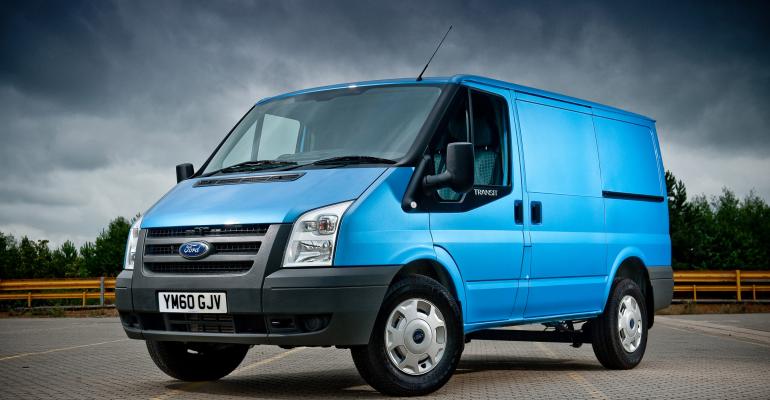DEARBORN, MI – Ford’s plan to replace its E-Series van in North America with the European fullsize Transit was put into motion years ago, when the auto maker began seeking input from customers on the transition.
Initially, E-Series buyers were against the move, says Tim Stoehr, Ford’s commercial truck marketing manager.
“They were very adamant that they didn’t want anything other than what they already had in (the) E-Series,” he tells WardsAuto at a media event here.
However, boxy European-style vans have been making headway in the U.S. since 2001, when the Dodge Sprinter made its debut. Now sold as a Mercedes, Sprinter sales are on pace to double their 2010 total.
Rising fuel prices have further shaped public perception. Through November, deliveries of the Class 1 Ford Transit Connect were tracking 13.9% ahead of like-2010.
Customers “have learned more about the global Transit product, and there has been much more interest and excitement about it,” Stoehr says.
One thing that helped win them over is that the Transit fullsize van will be about 25% more fuel-efficient than a comparable E-Series, mostly because it’s 300 lbs. (136 kg) lighter.
Plans call for the E-Series to be phased out shortly after the Transit fullsize van arrives at U.S. dealerships in 2014. However, the E-Series will be offered in chassis-cab form through the end of the decade, Ford says.
The fullsize Transit will be built at Ford’s Kansas City, MO, assembly plant, which is undergoing a $1.1 billion renovation to accommodate production of the van.
The fullsize Transit is offered to global customers in a variety of cargo, passenger and chassis cab configurations with a choice of three diesels: a 2.2L Duratorq TDCi inline 4-cyl., 2.4L Duratorq TDCi I-4 and 3.2L Duratorq TDCi I-5.
Ford has not announced what body configurations and powertrains will be offered in North America, but Stoehr says there will be multiple roof heights and lengths and a wide range of powertrains.
The stakes are high for Ford, which leads the U.S. commercial-vehicle market. According to the auto maker’s data, the segment typically accounts for 900,000 sales annually. Of that, 37% are medium and heavy trucks, of which Ford holds a 5% market share.
About 29% are pickups and class 3-5 trucks, and the auto maker says it has a 50% share of that category. The remaining 34% of the commercial-vehicle market is fullsize vans, of which Ford holds a 56% share.
Through November, E-Series vans controlled 51.3% of the Large Van category, as defined by WardsAuto, with 103,800 sales. Its nearest competitor was the Chevrolet Express with 63,482, good for a 31.4% share. Some 97% of E-Series deliveries are to the commercial market, Ford says.
Stoehr says he expects Ford to retain its dominance in the van segment following the transition to the Transit.
“We do expect similar volumes and share, but volumes are difficult to call because so much depends on the industry,” he says. “But we know there is tremendous pent-up demand, especially for commercial vehicles. The average age of commercial vehicles is at an all-time high right now.”




